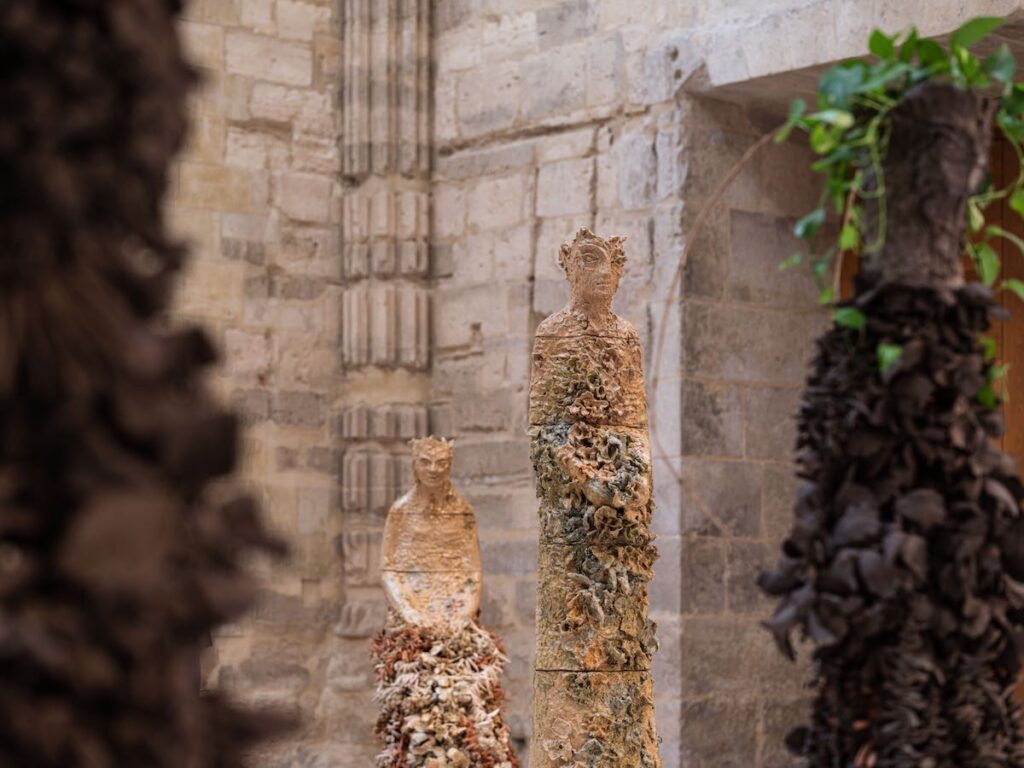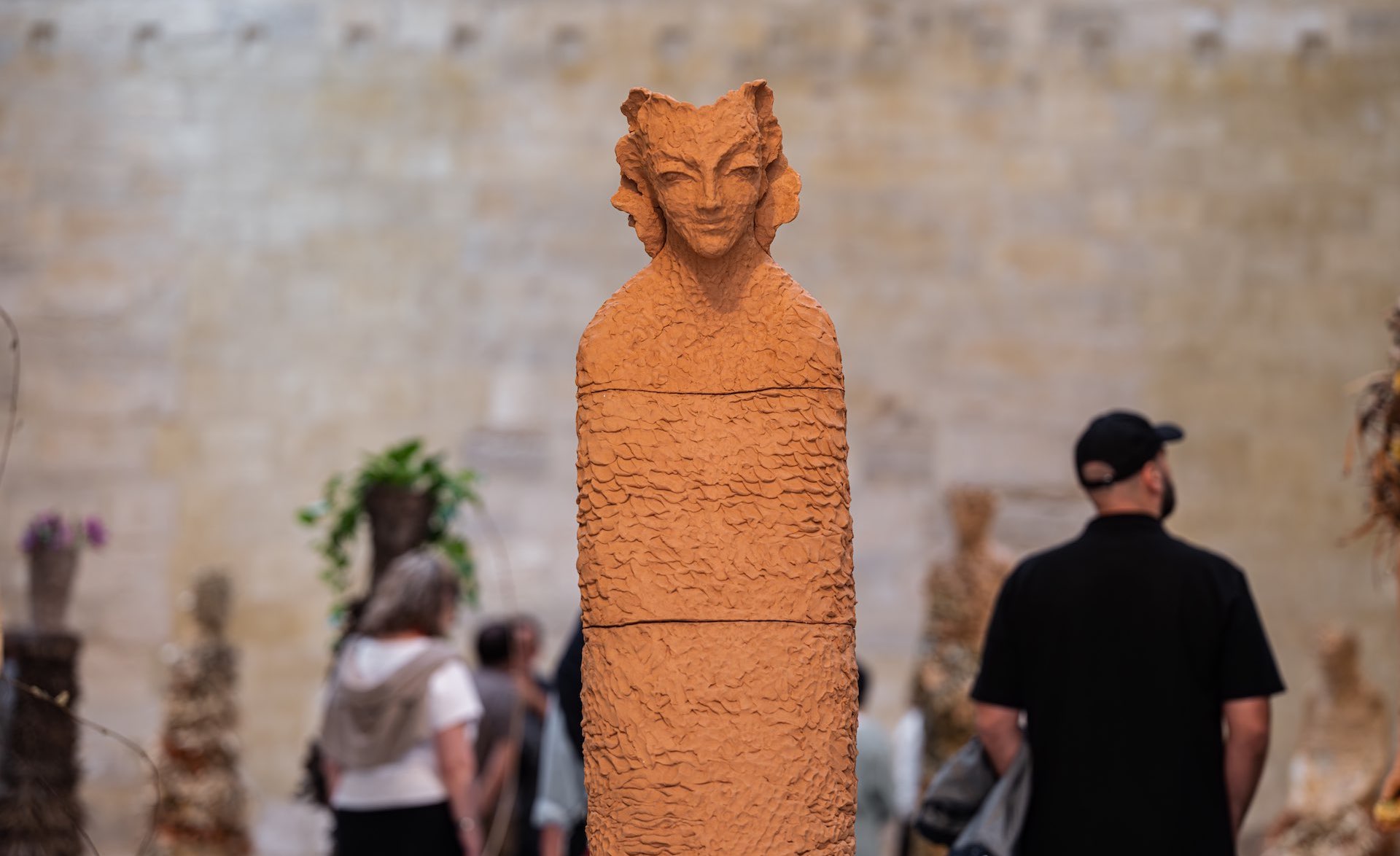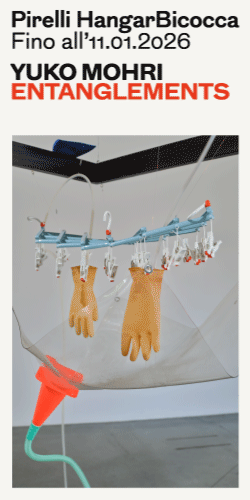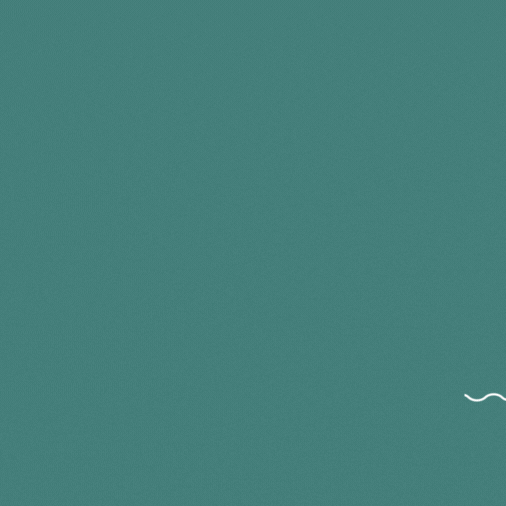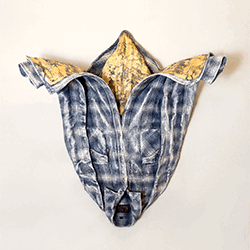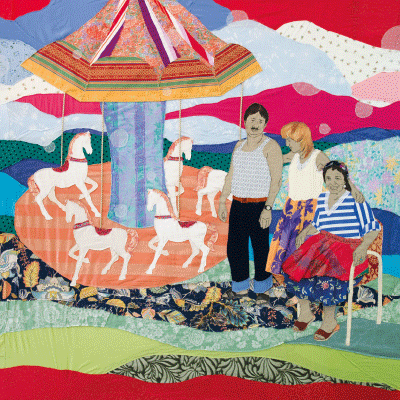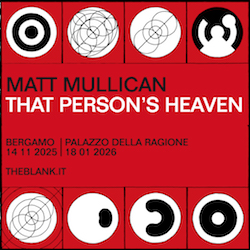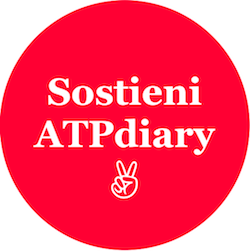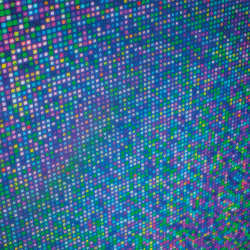English version below —
Testo di Luca Parise
Traduzione di Camilla Santini
Quando guardo il lavoro di Chiara esposto nella cappella del Museo Patio Herreriano di Valladolid, a cura de Javier Hontoria, nell’esposizione “Erguidas, yacentes”, provo una sensazione particolare, attraversata da una certa contraddizione: sto osservando sculture antropomorfizzate, ma che, per me, non sembrano in alcun modo riferirsi agli esseri umani. Allora, cosa succede?
Prima cosa
Non vedo né percepisco “l’umanità” come il centro dell’opera. È certo che nasce da un essere umano — un’ artista — ma le figure mi sembrano appartenere ad un altro ambito.
È impossibile non notare l’aspetto antropomorfo delle figure — forse è proprio questa la trappola. All’inizio ne sono attratto (vedo un volto, vedo un corpo), ma molto presto vengo trasportato altrove — in un luogo che non è umano. Cos’è questo luogo? Direi che è la natura stessa — mi ritrovo immerso in essa. In questo preciso momento accade qualcosa: sono costretto a collocare l’umanità, la mia porta d’ingresso, dentro la natura (non al di sopra, né separata), poiché l’oggetto rimane lo stesso.
In questo senso, l’aspetto umano iniziale dell’opera viene presto sopraffatto dalla natura. L’opera mi costringe a vedere l’umanità come parte del mondo naturale, ricordandomi che essere natura viene prima di essere umano. C’è una certa violenza in questo — colpisce la mia fragile percezione di umanità. La mia umanità è parte della natura, non il contrario.
Provo una sensazione ambivalente — l’essere sopraffatto dalla Natura (paura? spaesamento?), ma allo stesso tempo il sentirmi Natura (potente? parte di qualcosa di più grande?).
Per un breve momento, entro in comunione con le sculture.
Una parentesi
Sono un po’ scettico quando sento parlare di Antropocene — per favore, tenete a bada i forconi, lasciatemi finire. Certo, stiamo avendo un impatto enorme sul pianeta — non sono affatto un negazionista — ma non ci sarebbe forse una certa arroganza in tutto questo? Siamo una piccolissima parte della Natura. Potremmo cambiare il pianeta fino a renderlo inabitabile per noi stessi, ma, dal punto di vista della Natura (intesa come qualcosa che non è centrata sull’uomo o sulla “vita”), non è forse irrilevante? Un pianeta deserto non è forse “natura” tanto quanto una foresta tropicale?
Qualcosa in questo discorso mi sembra stonato: dobbiamo ritenerci responsabili dei cambiamenti sul pianeta, perché li abbiamo causati e ci riguardano. Il mondo che stiamo distruggendo è quello che, comunemente, consideriamo funzionale a noi (animali, clima, piante…). Ma è davvero rilevante per il cosmo stesso, da una prospettiva che non sia la nostra, degli esseri viventi? Probabilmente molto poco.
Il pianeta, gli oceani, le foreste non hanno bisogno di noi, siamo noi ad aver bisogno di loro. La Natura — la grande Natura, non le innumerevoli specie che stiamo distruggendo, tra cui la nostra — non si cura minimamente di noi.
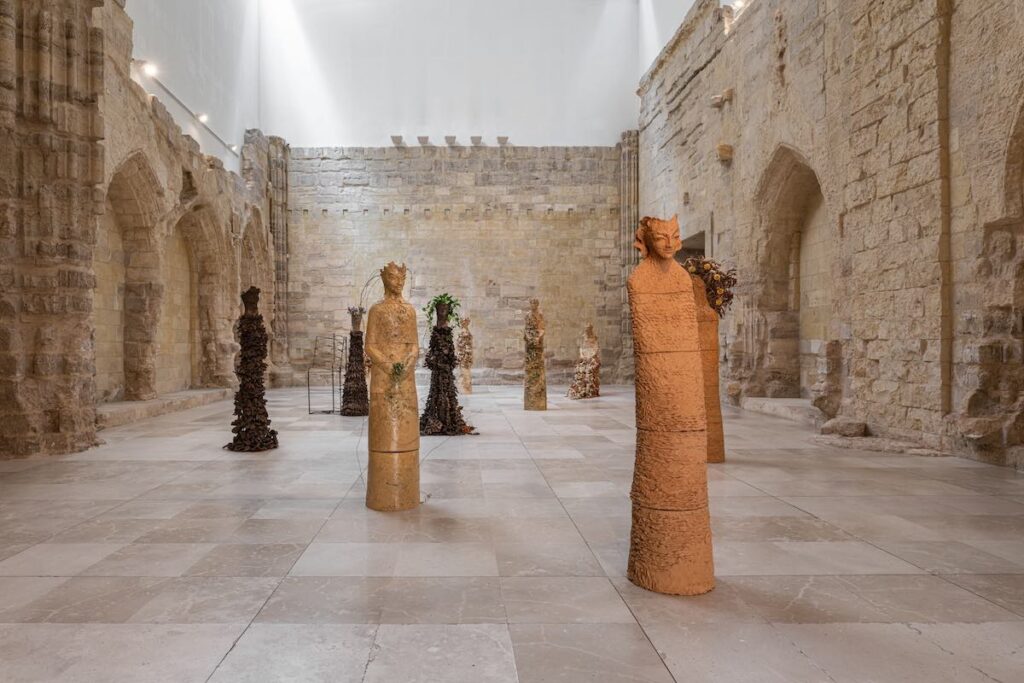
Seconda cosa
Questo ci porta a un secondo punto, che è al cuore stesso dell’arte — la tensione tra l’artificiale e il naturale. Perché facciamo arte?
L’arte è, fondamentalmente, qualcosa di creato dagli esseri umani; la natura, invece, esiste per conto proprio. Un tramonto non è paragonabile a un dipinto di Matisse — né il contrario. Sono semplicemente due cose diverse.
Noi esseri umani siamo pieni di contraddizioni — una di queste è essere natura, ma allo stesso tempo allontanarcene. L’arte, di per sé, non è natura. Non troviamo sculture, come quelle che vediamo qui, adagiate lungo un greto di fiume, portate dall’acqua.
I fiori artificiali nelle mani di una figura rappresentano l’apice di questa costruzione — ci ricordano che siamo Natura, e anche, in un certo senso, al di fuori di essa. Non è né bene né male. È ciò che è. Non è una risposta, né una domanda. Mi permette di vedere la mia relazione con la natura non come qualcosa di esterno, e non come “umanità” — ma natura come natura. E me stesso come parte di essa.
Una seconda parentesi, forse una conclusione
Per me, l’opera eccelle non nel creare una relazione verticale con il divino — di trascendenza, di elevazione — ma nello stendersi orizzontalmente, come una forza che mi invita a guardarmi attorno (non che l’arte debba invitarti a qualcosa — è solo quello che sento); esco dalla mostra con una grande voglia di fare.
In un momento storico in cui siamo così centrati su noi stessi (direi che persino l’ecologia, in una certa misura, ruota intorno a noi), un’opera che mi permette, anche solo per un attimo, di relazionarmi con il mondo circostante da una prospettiva che non è la mia, mi sembra un atto radicale.
Cover: Chara Camoni, “Erguidas, yacentes” – A cura di Javier Hontoria – Museo Patio Herreriano, Valladolid, Spagna – Foto Juan Carlos Quindós de la Fuente
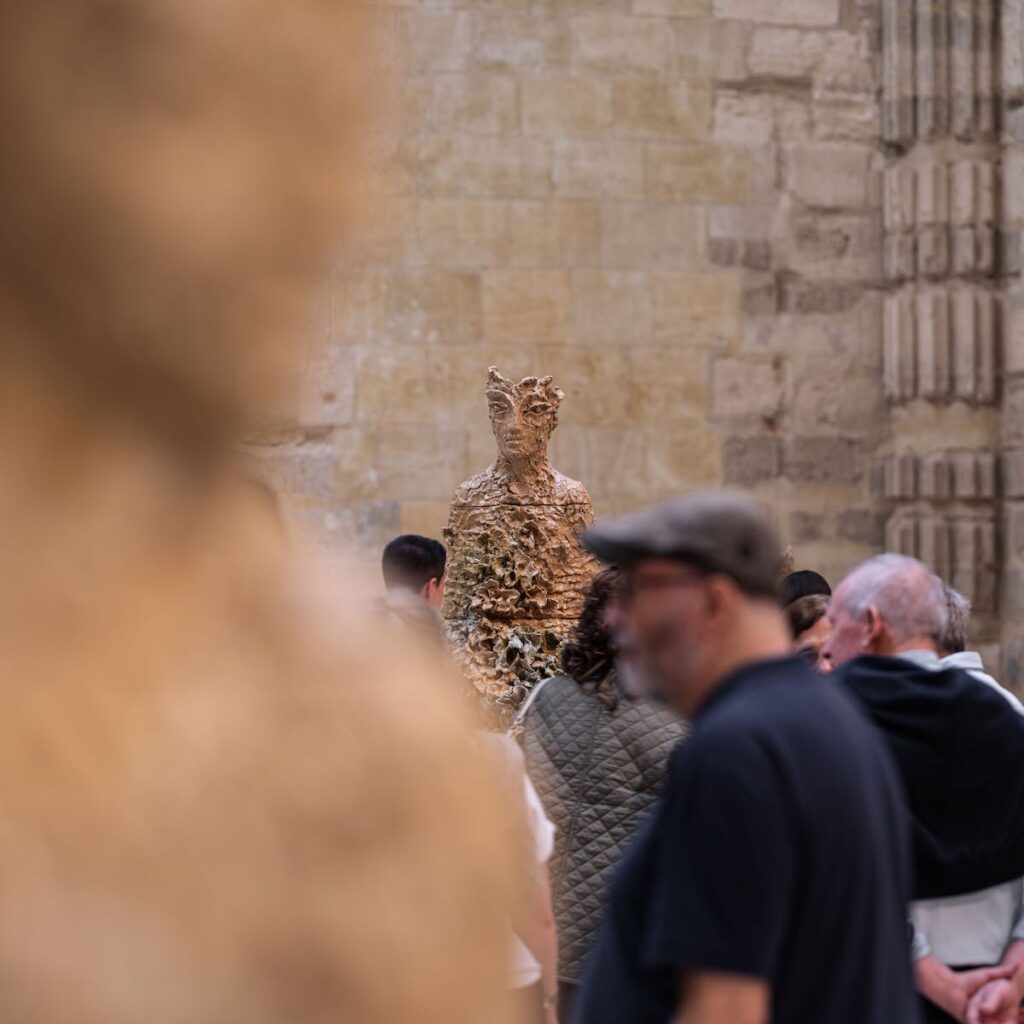


Reflection on the nature of Chiara Camoni’s sculptures at the Museo Patio Herreriano in Valladolid, Spain
Text by Luca Parise
When I see Chiara’s work exhibited in the chapel room at Patio Herreriano Museum in Valladolid, curated by Javier Hontoria, in the exhibition “Erguidas, yacentes”, I have a particular feeling that comes with some contradiction: I’m seeing sculptures that are anthropomorphized, but to me, they don’t seem to relate to humans. So what is happening??
First thing
I don’t see or feel “humanity” as the center of the work. It is born, for sure, from a human- an artist- but the figures feel as if they belong to another territory.
It’s impossible not to relate to the anthropomorphized aspect of the figures — maybe that’s the trap. At first, I’m drawn to them (I see a face, I see a body), but very quickly I’m taken somewhere else — a place that’s not human. What is it? I would say it’s nature itself— I find myself within it. In this exact moment, something happens: I’m forced to place humanity, my entrance door, inside nature (not above it, nor apart from it) since the object remains the same.
In this sense, the initial human aspect of the work is soon overtaken by nature. The piece compels me to see humanity as part of the natural world, reminding me that being nature comes before being human. There’s a certain violence in that — it strikes at my fragile sense of humanity. My humanity is part of nature, not the other way around.
I feel this ambivalent sensation — to be suppressed by Nature (fear? displacement?), but on the other hand, to feel myself Nature (powerful? part of something bigger?).
For a brief moment, I commune with the sculptures.
A parenthesis
(I’m a little skeptical when I hear about the Anthropocene (please, save the rocks — let me finish): of course, we are severely impacting the planet — I’m far from a denier — but wouldn’t there be some arrogance in that? We are a tiny part of nature. We might change the planet to a state that doesn’t even sustain ourselves, but from nature’s perspective (as something that is not human, or “life” centered), isn’t that irrelevant? Isn’t a deserted planet as much “nature” as a tropical forest?
Something seems a bit off to me about this topic: we must hold ourselves responsible for the changes on the planet because we made them and they affect us. The world we are destroying is the one that is commonly seen as one that serves us (animals, climate, plants…). But is that relevant for the cosmos itself, from a perspective that isn’t ours, the living beings? Probably very little.
The planet, the oceans, the forests don’t need us, WE need them. Nature — the big nature, not the countless species we are destroying, among which we belong — doesn’t give a damn about us).
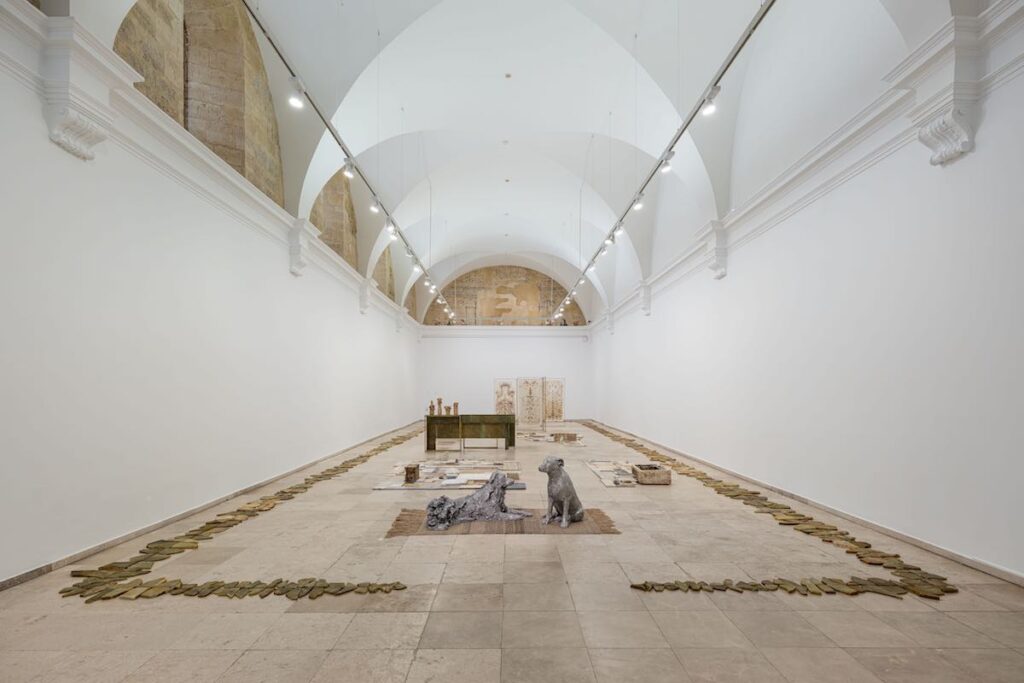
Second thing
This leads us to a second point, which is at the very core of art — the tension between the artificial and the natural. Why do we make art?
Art is fundamentally something made by humans; nature is essentially made by itself. A sunset is not comparable to a Matisse painting — nor the other way around. They are simply different matters.
We humans carry many contradictions — one of them is being nature, but also walking away from it. Art itself is not nature. We don’t find sculptures, as we are seeing here, lying around a riverbed, brought by the water.
The artificial flowers in the hands of a figure are the apex of this construction — reminding us that we are Nature, and also, in a weird way, outside of it. It’s not good, nor bad. It is what it is. This is not an answer, nor a question. It allows me to see my own relationship with nature, not as something external, and not as humanity — nature as nature. And myself as part of it.
A second parenthesis, maybe a conclusion
For me, the work excels not by creating a vertical relation with the almighty — of transcendence, of taking me out — but by sprawling me, by being a horizontal force that invites me to look around (not that art needs to invite you to anything — I just feel it; I leave the exhibition with a lot of energy to produce).
In a historical moment when we are so self-centred (I would say that even ecology, to a certain degree, is centred on us) a work that allows me, for a brief moment, to relate with the surrounding world that’s not on my perspective, feels like a radical endeavour.
